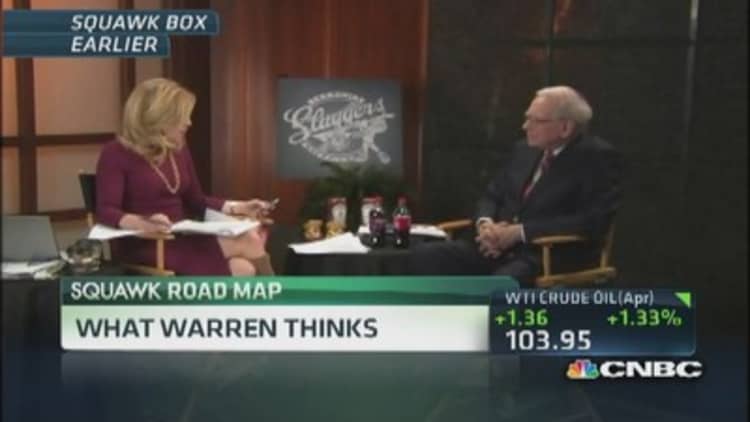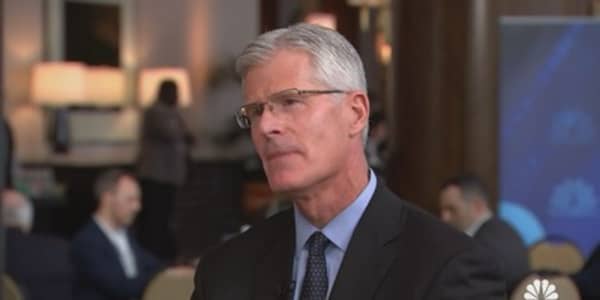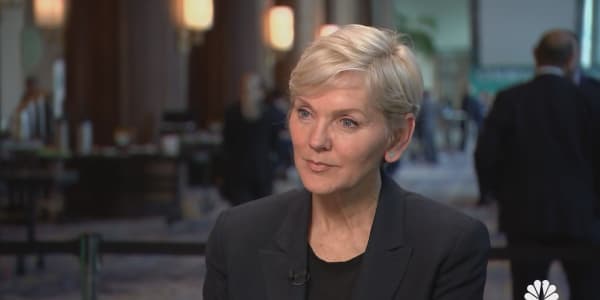New federal guidelines for oil shipments do not look set to slow down the growth of rail as a means of carrying crude to refineries in the U.S. and Canada.
Citigroup analyst Christian Wetherbee said the big issue would be when the U.S. requires an upgrade of tanker cars, but if they are phased in slowly, it would not be that big an impact on rail shipping. The U.S. government announced new standards recently, after several high-profile accidents, including a runaway train derailment that resulted in the death of dozens in a Quebec nightclub last summer.
"We've been looking at this for a while, and I think so far my impression of what we've seen from a regulatory perspective is what we termed responsible. You can characterize it as reasonably industry-friendly, meaning the administration—the Department of Transportation—has not done anything that would really hamper the growth of crude volumes going forward," said Wetherbee.
The topic will be part of the discussion at the IHS CERAWeek energy conference in Houston, where global energy-industry officials will also discuss the shifting production picture for oil and gas. The growth in U.S. oil and gas production is a big focus of the discussion, and how to move those growing resources is part of the agenda.
Wetherbee expects rail shipments in North America to grow from 800,000 barrels per day to about 2 million barrels a day over a five-year period. "The sense being that we're going to be putting out 10 million barrels a day of domestic production. We're looking for the market share to increase, but not massively," he said. The U.S. currently produces about 8 million barrels a day, and some of the newest production is most likely to use rail, like the Bakken region in North Dakota.
But the government has also been looking at whether the Bakken oil is more combustible than other grades.
We expect [the regulations] could add $1 to $2 per barrel of additional cost for moving crude by rail.Jackie ForrestIHS senior director of Global Oil
Jackie Forrest, IHS senior director of global oil, said the guidelines have created uncertainty, and it's too soon to say whether the regulations will impact the development of rail cargo, but she, too, says the timing on the expected requirement for upgrading railcars is key.
Railroads have taken over where pipelines are lacking, either awaiting approval, like Keystone, or where pipelines are simply nonexistent. Crude shipments from the oil sands region in Western Canada alone should grow from 200,000 barrels per day at the end of 2013 to about 600,000 in 2016. "We have fast growth out of the Bakken region as well," Forrest said.
(Read more: Canadian oil moves south without the Keystone pipeline)
"So far, since the impact of future policy is still uncertain, we have not adjusted our outlook for rail owing to regulation changes," she said. Forrest noted that the industry estimates 78,000 cars require retrofits, of a total 92,000.
"We expect this could add $1 to $2 per barrel of additional cost for moving crude by rail," Forrest said. "However," she added, "more material is the time frame for making these changes. If it takes a large number of cars out of the fleet in a short time frame, that could slow down crude-by-rail movements. We do not expect to know the schedule for some time, perhaps about a year."
Forrest explained that at this point, she does not see the other proposed requirements, such as more testing of crude, slower speeds, different routings and more planning for emergency responds to affect the movement of oil substantially. But she is studying it further and watching for more clarity on the railcars.
(Read more: The great US oil debate: To export or not export)

Wetherbee said the shippers, not the rail companies, are the owners of the tank cars, which would likely have to be replaced with cars that have thicker steel jackets.
"In my mind, the next step of this regulation will be the phasing out of these old cars, and as long as it happens over five years or more, the industry that built the tank cars will be able to replace the existing fleet and still add to it. That will foster growth in the industry," he said.
As quickly as rail transport has grown, it is still a tiny part of railroad revenues. "Crude is still less than 5 percent of the entire industry," Wetherbee said.
The drop in coal transport has been much more stunning in terms of impact. "Coal has cost the eastern rails—individual companies such as CSX and Norfolk Southern—$1 billion in revenue each over the last nine years. We're nowhere near replacing that with crude," he said.
—By Patti Domm. Follow her on Twitter @pattidomm.





